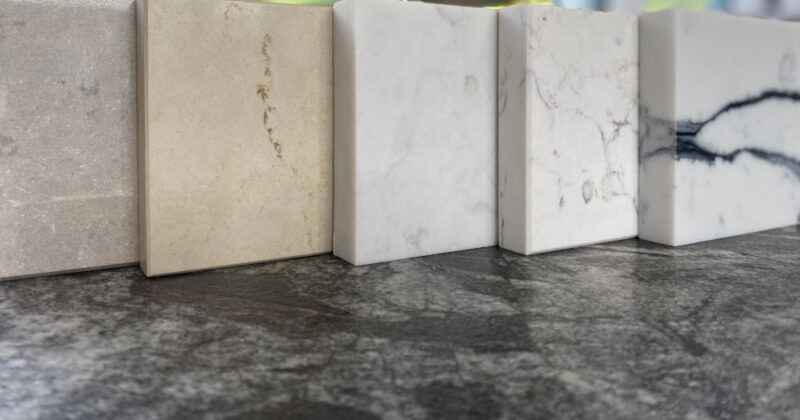Low Silica Quartz Worktops vs. Traditional Quartz: What’s the Difference?
In recent years, quartz worktops have become the go-to choice for modern kitchens and bathrooms, prized for their durability and aesthetic appeal. However, a new innovation in the market has caught the attention of homeowners and designers alike: low silica quartz worktops.
What is Traditional Quartz?
Traditional mineral quartz is composed of approximately 90-95% ground natural quartz combined with polymer resins and pigments. This engineered stone is manufactured through a process that combines these materials under intense pressure and heat, resulting in a non-porous surface that rivals natural stone in both beauty and functionality.
The high silica content contributes to its remarkable hardness and durability, making it resistant to scratches, stains, and everyday wear and tear. Traditional quartz has set the benchmark for engineered stone surfaces, offering a perfect balance of performance and aesthetics.
What Are Low Silica Quartz Worktops?
Low silica quartz, or silica free quartz worktops, represents the latest evolution in engineered stone technology. These innovative surfaces are manufactured using bio-resins, recycled glass and less than 5% silica to make it more eco-friendly and safer for manufacturers.
The manufacturing process involves using different mineral compositions and advanced binding technologies to create a surface that performs similarly to conventional quartz but with substantially less crystalline silica. This breakthrough has been achieved through years of research and development, resulting in a product that addresses both safety concerns and performance requirements.
High Performance and Aesthetically Stunning
Expanding on the popular Silestone quartz range, Silestone XM offers the latest in zero silica worktops. Maintaining the renowned quality of Silestone, they’re produced using an innovative hybrid formula. Silestone XM blends premium minerals, quartz and recycled glass with a maximum of 10% silica for an exceptional product that’s kinder to the planet while just as striking.
Silestone Hybriq technology means this product is manufactured using renewable energy and recycled water, creating an even eco-friendlier product and one that’s produced with sustainability and safety in mind.
What are the Benefits of Low Silica Quartz?
There are many benefits to low or zero silica quartz, the main one being that it offers all the advantages of classic quartz worktops plus more. Less silica in the product means lower levels of silica dust, which means it’s more environmentally friendly and minimises air pollution during the production phase.
What’s more, if silica isn’t used, manufacturers can choose more sustainable options for the quartz mixture, such as resin-based and recycled materials. Silica dust is a big health concern in the manufacturing of traditional quartz, being linked to silicosis, a serious lung disease. This makes low silica quartz safer for those involved in producing this material.
While it does have different properties to classic silica quartz, zero silica worktops are highly durable and are just as stain-, scratch- and heat-resistant as regular quartz, so you can use them with confidence in your kitchen. They’ll retain their beauty for many years to come and can be crafted in a range of colours and styles to suit your home. Zero silica quartz is also non-porous, so it makes for a low-maintenance and hygienic solution for counters and kitchen surfaces.
Are Low Silica Quartz Worktops a Good Investment?
Choosing the right worktop for your needs requires research and thought – it’s an investment you’ll use daily, so it needs to work with your style, your budget and your lifestyle. The percentage of crystalline silica can make quartz worktops more or less expensive, with those with less typically being more affordable than those with higher levels. But as we’ve explored, there are a host of other benefits to consider too. If you’re looking for a beautiful worktop that’s hardwearing and easy to maintain, while also being better for the planet, low silica options may be perfect for you.
Making the Right Choice
The decision between traditional and low silica quartz worktops ultimately depends on several factors, including your budget, environmental concerns, and your specific project requirements. If you’d like more information about the options available or you’d like a personalised quote, contact Chandler Stoneworks today and we’ll be happy to help.












